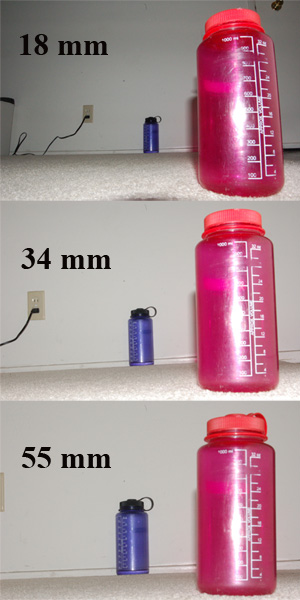The two fundamental parameters of an optical lens are the focal length and the maximum aperture. The lens' focal length determines the magnification of the image projected onto the image plane, and the aperture the light intensity of that image. For a given photographic system the focal length determines the angle of view, short focal lengths giving a wider field of view than longer focal length lenses. The wider the aperture, identified by a smaller f-number, allows using a faster shutter speed for the same exposure.
The maximum usable aperture of a lens is specified as the focal ratio or f-number, defined as the lens' focal length divided by the effective aperture (or entrance pupil), a dimensionless number. The lower the f-number, the higher light intensity at the focal plane. Larger apertures (smaller f-numbers) provide a much shallower depth of field than smaller apertures, other conditions being equal. Practical lens assemblies may also contain mechanisms to deal with measuring light, secondary apertures for flare reduction, and mechanisms to hold the aperture open until the instant of exposure to allow SLR cameras to focus with a brighter image with shallower depth of field, theoretically allowing better focus accuracy.
Focal lengths are usually specified in millimetres (mm), but older lenses might be marked in centimetres (cm) or inches. For a given film or sensor size, specified by the length of the diagonal, a lens may be classified as a:
Normal lens: angle of view of the diagonal about 50° and a focal length approximately equal to the image diagonal.
Wide-angle lens: angle of view wider than 60° and focal length shorter than normal.
Telephoto lens or long-focus lens: angle of view narrower and focal length longer than normal. A distinction is sometimes made between a long-focus lens and a true telephoto lens: the telephoto lens has a telephoto group to reduce the physical length of the objective.
Macro lens: special lens corrected optically for close-ups, e.g., for images to object ratios ranging from about 1:10 to 1:1. and having a particularly flat image plane suitable for flat images. A macro lens may be of any focal length, the actual focus length being determined by its practical use, considering magnification the required ratio, access to the subject and illumination considerations.

No comments:
Post a Comment